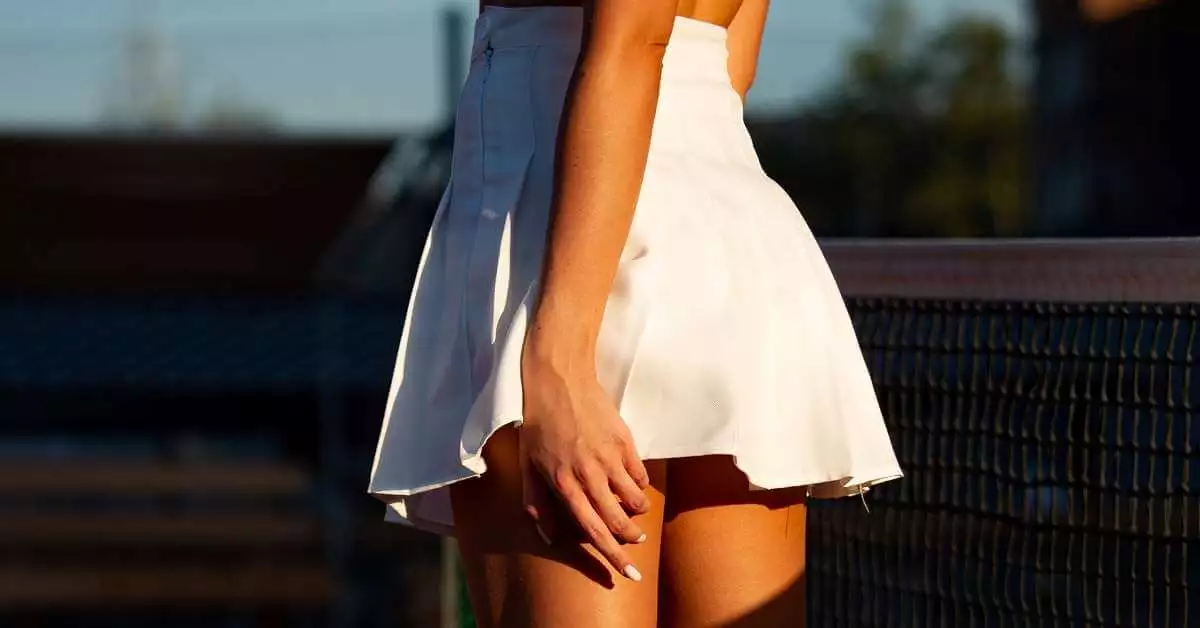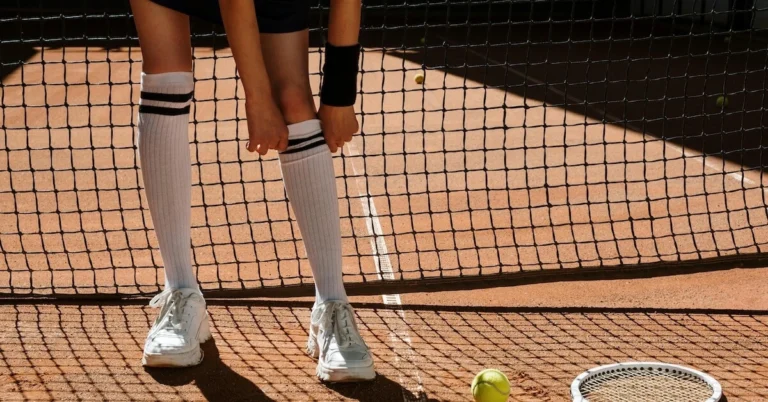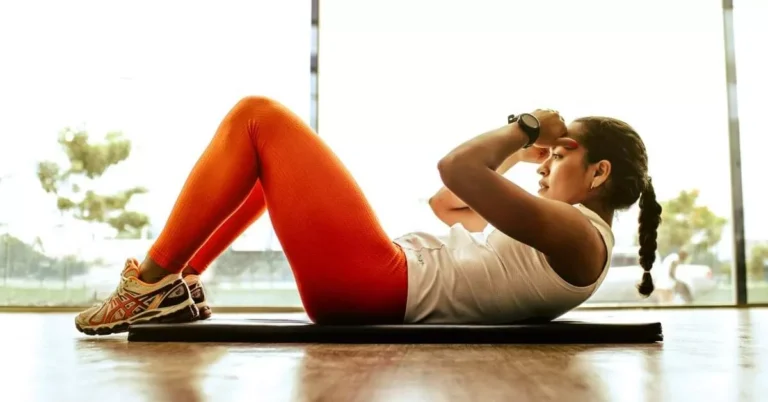Tennis skirts have become a staple in the sport of tennis, worn by players of all levels. The history of the tennis skirt dates back to the Victorian era, when women wore long dresses and corsets to play tennis. The modern skirt was introduced during this time, providing women with a more functional and comfortable option for playing the sport.
The tennis skirt has come a long way since its inception, evolving in both design and function. Today’s skirts are designed with performance in mind, made with moisture-wicking materials and built-in shorts for added comfort and support. It has also become a fashion statement, with many designers and brands incorporating the classic piece into their collections.
Pro:
✅ comfortable ✅ length
Con:
❌ Runs one size smaller (according to some customers)
Origins of the Tennis Skirt
The history of the tennis skirt dates back to the Victorian Era, where women’s fashion was dominated by corsets and long dresses. It was during this time that lawn tennis was introduced, and women were expected to play in their restrictive clothing. However, Charlotte “Lottie” Dod, a five-time Wimbledon champion, refused to conform to these strict fashion rules. She began wearing shorter, looser-fitting dresses, which allowed her to move more freely on the court.
The skirt as we know it today was first introduced in the early 1900s. It was specifically designed for lawn tennis and was made from lightweight materials that allowed for ease of movement. The skirt was shorter than traditional dresses, ending just above the ankle, and featured a pleated design that allowed for airflow and comfort.
In England, where lawn tennis originated, the tennis skirt became a symbol of women’s emancipation. It was seen as a practical and functional choice, allowing women to participate in sports without compromising their femininity. The popularity of the tennis skirt quickly spread to other countries, and it became a staple in women’s athletic wear.
Today, the skirt remains an iconic piece of sports fashion. It has undergone many changes over the years, with designers experimenting with different lengths, materials, and styles. However, its origins in the Victorian Era and its association with lawn tennis continue to influence its design and popularity.
Transition to Comfort and Function
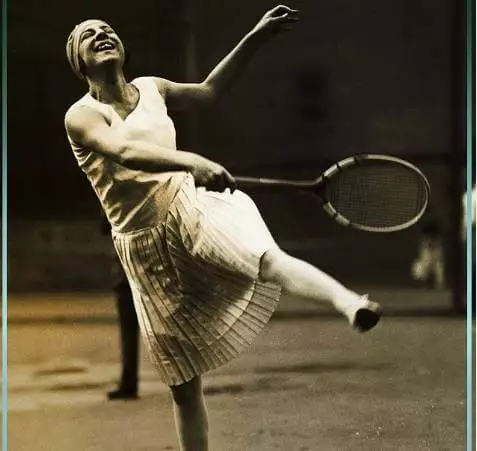
As tennis became more popular in the 1920s and 1930s, the uniform of tennis players began to change. Tennis whites were still the norm, but the materials used became more lightweight and breathable, allowing for greater mobility on the court.
The skirt also began to evolve during this time. Instead of the longer, more restrictive skirts of the past, tennis players began to wear shorter, more functional skirts that allowed for greater ease of movement. The addition of pleats also helped to increase mobility and comfort.
In the 1940s and 1950s, cotton became the preferred material for tennis skirts due to its lightweight and breathable properties. This allowed players to stay cool and comfortable during long matches.
As tennis continued to evolve, so did the function of the tennis skirt. It became less of a fashion statement and more of a performance piece. The focus shifted from style to function, with the goal of creating a uniform that would allow players to perform at their best.
Today, the skirt remains an essential part of the tennis uniform, with many modern designs incorporating advanced materials and technology to enhance performance. From pleats to pockets, the tennis skirt has come a long way in its transition to comfort and function.
Tennis Skirt in Major Tournaments
The tennis skirt has been a staple in major tournaments such as Wimbledon, French Open, US Open, and Australian Open. The dress code for tennis players is strictly enforced, and the tennis skirt is an essential part of the attire.
At Wimbledon, the oldest tennis tournament in the world, players are required to wear all-white clothing. The tennis skirt is a popular choice among female players, and it has become an iconic part of the tournament’s history. Some notable female players who have worn tennis skirts at Wimbledon include Virginia Wade, Billie Jean King, and Anne White.
At the French Open, players are required to wear predominantly white clothing with some color allowed. The skirt is a common sight on the clay courts of Roland Garros. Some notable female players who have worn tennis skirts at the French Open include Maureen Connolly, Helen Wills Moody, and Pauline Betz.
At the US Open, players are allowed to wear any color of clothing. The skirt is a popular choice among female players, and it has been worn by some of the greatest players in the tournament’s history. Some notable female players who have worn tennis skirts at the US Open include Marlys Burel, Martina Navratilova, and Serena Williams.
At the Australian Open, players are also allowed to wear any color of clothing. The skirt is a popular choice among female players, and it has been worn by some of the greatest players in the tournament’s history. Some notable female players who have worn tennis skirts at the Australian Open include Steffi Graf and Naomi Osaka.
Fashion Evolution through the Decades

Tennis skirts have come a long way since their inception in the late 1800s. Over the decades, they have evolved in style and trend, reflecting the changing fashion of the times.
In the 1960s, tennis fashion took on a new look with the rise of mod fashion. Shorter hemlines, bold colors, and geometric patterns were all the rage. Tennis skirts followed suit, with shorter hemlines and bright colors becoming popular.
The 1970s saw a continuation of the bold, colorful trend, with the addition of denim to the mix. Denim tennis skirts became a staple of the decade, often paired with colorful tops and headbands.
In the 1980s, tennis fashion took a turn towards the more athletic. The popularity of aerobics and fitness led to the rise of the bodysuit and unitard, both of which were often worn on the tennis court. Tennis skirts became shorter and more fitted, reflecting the overall trend towards a more athletic look.
The 1990s saw a return to a more classic tennis style, with longer skirts and a focus on simplicity. Lace shorts became popular, adding a touch of femininity to the classic tennis look.
In the 2000s, tennis fashion became more diverse, with a mix of classic and modern styles. The catsuit became a popular choice for some players, while others opted for more traditional tennis skirts. Bold colors and patterns continued to be popular, as did the use of high-performance fabrics.
Influence of Designers and Brands

The tennis skirt has evolved over time with the influence of designers and brands. One of the most notable designers was Ted Tinling, who designed dresses for tennis players including Billie Jean King and Virginia Wade. Tinling is credited with introducing the mini-skirt to tennis in the 1960s, which was a bold move at the time.
In recent years, brands such as Nike and Adidas have been major players in the tennis skirt market. Nike has collaborated with designer Virgil Abloh and his brand Off-White to create unique and fashionable tennis skirts. Adidas has also collaborated with designers to create stylish and functional tennis skirts.
Sponsor logos have also played a significant role in the design of skirts. René Lacoste’s iconic crocodile logo has been featured on tennis skirts for decades, and Fred Perry’s laurel wreath logo has also become a symbol of tennis fashion. In recent years, sponsor logos have become more prominent, with brands such as Eleven featuring their logo prominently on their tennis skirts.
In addition to logos, designers have also incorporated unique elements into their tennis skirt designs. Swarovski crystals have been added to tennis skirts to add a touch of glamour, and black tutus have been worn by players such as Serena Williams to make a statement on the court.
Controversies and Policing in Tennis Attire
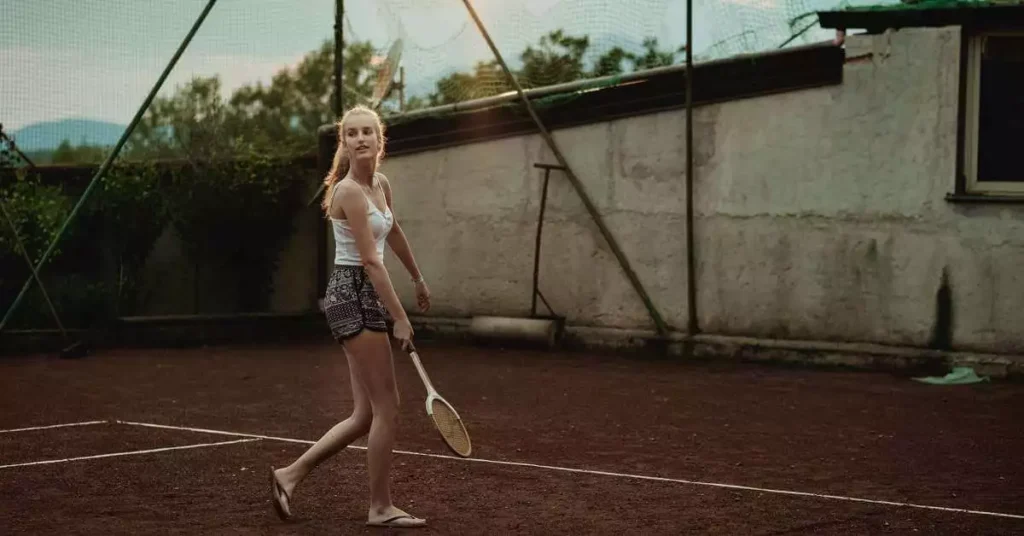
Tennis attire has been a topic of controversy for decades. The French Tennis Federation (FTF) has been at the forefront of this controversy, having implemented a dress code since the early 1900s. In 2019, Bernard Giudicelli, the president of the FTF, caused a stir when he announced that the federation would be implementing a stricter dress code, effectively banning Serena Williams’ iconic catsuit. The decision was met with backlash from fans and players alike, with many accusing the federation of policing women’s bodies.
The policing of women’s attire is not unique to the FTF. In 2018, the Women’s Tennis Association (WTA) banned Williams’ black catsuit at the French Open, claiming that it went “too far.” The ban was met with immediate backlash, with tennis legend Billie Jean King writing on Twitter, “The policing of women’s bodies must end.” Similarly, tennis player Andy Rodick called the ban “dumb and shortsighted.”
The controversy surrounding tennis attire goes beyond just the policing of women’s bodies. In the 1970s, men were required to wear all-white at Wimbledon, with the exception of a colored trim on their shirts. This rule was relaxed in the 1990s, but in 2013, the All England Club, which hosts Wimbledon, implemented a stricter dress code for men, requiring them to wear all-white once again.
Despite the controversies, tennis attire has also been a platform for self-expression and celebrity. In recent years, players like Venus Williams and Maria Sharapova have become known for their unique and daring on-court fashion choices. Serena Williams has also used her fashion to make a statement, wearing a “mother, champion, queen, goddess” catsuit at the 2018 French Open, which she said was meant to inspire other mothers.
As tennis continues to evolve, so too will its fashion. The sport’s history has shown that controversies and policing will always be a part of the conversation, but so too will self-expression and individuality.
Modern Tennis Skirts and Their Practicality

Modern tennis skirts have come a long way since their inception in the 15th century. Today’s skirts are designed to provide comfort, practicality, and style to athletes on the court. They are made with lightweight and breathable materials such as nylon and spandex, which allow for maximum movement and agility during play.
One of the most notable features of modern tennis skirts is their pleats. These pleats not only add a stylish touch to the skirt but also provide practical benefits. The pleats allow for greater range of motion, making it easier for athletes to move around the court and reach for shots.
In addition to their pleats, modern tennis skirts are also designed with comfort in mind. They are made to be lightweight and breathable, which helps to keep athletes cool and dry during long matches. This is especially important in hot and humid weather conditions.
Another practical feature of modern tennis skirts is their length. They are typically shorter than traditional skirts, which allows for greater freedom of movement and agility. This is particularly important for athletes who need to move quickly and make split-second decisions on the court.
FAQ
Where did the tennis skirt come from?
The tennis skirt has its roots in the early 20th century, when women began playing tennis in long, heavy skirts and corsets. As women’s athletic wear evolved to be more practical and comfortable, the tennis skirt emerged as a popular choice for female tennis players.
What is the purpose of a tennis skirt?
The purpose of a tennis skirt is to provide female tennis players with a comfortable and functional garment for playing the sport. Tennis skirts are typically made of lightweight, breathable fabric and feature a pleated or flared design that allows for ease of movement on the court.
What era was tennis skirts?
Tennis skirts have been worn by female tennis players since the early 20th century, but they have evolved over time to reflect changes in fashion and athletic wear. Today, tennis skirts are a popular choice for female tennis players of all levels.
Did they wear tennis skirts in the 80s?
Yes, tennis skirts were a popular choice for female tennis players in the 1980s. During this era, tennis skirts often featured bold colors and patterns, and were paired with headbands, wristbands, and other athletic accessories.
What’s your favorite style or brand of tennis skirt and why? Are there any features or materials that you find particularly comfortable or functional on the court? Share your thoughts and experiences on the topic in the comments section below.

